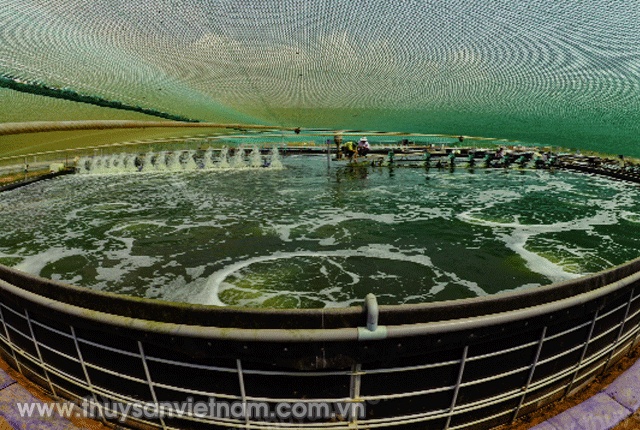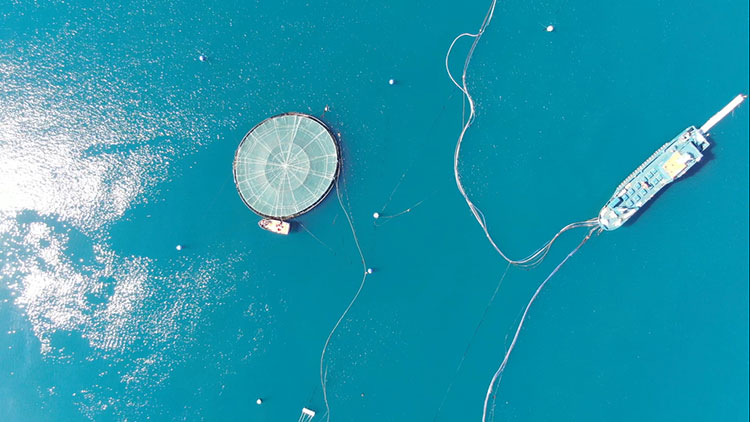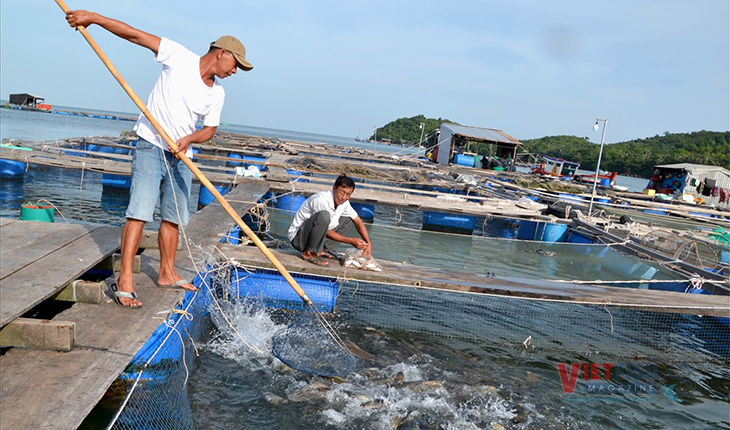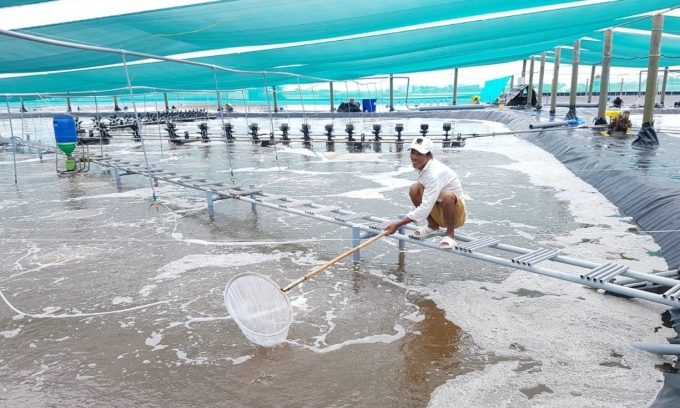Quang Tri: High efficiency in farming pinspotted spinefoot in lined ponds
In just three months, farming pinspotted spinefoot in this model resulted in an average size of 20 fish/kg, selling at 170,000 VND/kg, and generating a profit of 167 million VND per 0.3 hectares, which equates to over 550 million VND per hectare per crop.
To develop models for farming new species and intercropping valuable brackish water fish in abandoned aquaculture ponds, the Quang Tri Agricultural Extension Center initiated a model for farming pinspotted spinefoot in lined ponds in the coastal area of Trieu Van Commune, Trieu Phong District. Recently, the center organized a conference to summarize the results of this model.
The model covered an area of 3,000 square meters with a stocking density of 35 fish per square meter. The Quang Tri Agricultural Extension Center subsidized 50% of the costs for seed, industrial feed, and biological products, with technical staff closely overseeing the households to ensure adherence to technical requirements.
After three months, the pinspotted spinefoot reached an average size of 20 fish/kg, with an estimated survival rate of 60%. Currently, pinspotted spinefoot is fetching a high price (170,000 VND/kg for the size of 20 fish/kg). Considering the estimated harvest yield and investment costs over the farming period, the participating households achieved a profit of 167 million VND per 0.3 hectares after three months, equivalent to over 550 million VND per hectare per crop. This demonstrates that this new species provides high and stable economic returns for farmers.
The success of the model shows that pinspotted spinefoot is a suitable species for farming in lined ponds, potentially replacing or rotating with shrimp farming in different crops. This initiative helps shift farmers’ awareness, habits, and production methods. Additionally, it diversifies the species farmed in brackish water areas with low shrimp farming efficiency, utilizes abandoned pond areas, reduces environmental degradation, limits diseases, and ensures sustainability in aquaculture.
Through this model, farmers’ technical skills will improve, and their perspectives on choosing appropriate farming methods and species for local conditions will evolve. Farmers will feel secure in continuing their farming activities, preventing the abandonment of ponds, and promoting sustainable aquaculture practices.
VFM
(photo: Viet Toan/nongnghiep)






